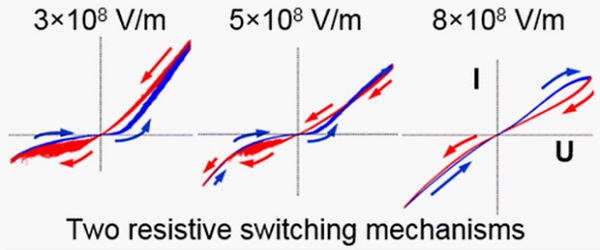Over the last decade or so, industry “experts” have predicted that the time was up for flash memory, and that some new technology on the horizon was poised to replace it.
While we don’t want to fall into this trap, it’s hard to ignore the details being released on a new perovskite-based memristor as being pretty darned close to being something capable of, at the very least, relieving some of our dependencies on the long-established flash technology.

Researchers at ETH Zurich, who detailed in their findings in the journal ACS Nano, have designed a memristor device out of perovskite just 5 nanometers thick that has three stable resistive states; this means it can encode data as 0, 1, and 2. That’s a “trit”, as opposed to the fairly well-known “bit”.
“Our component could therefore also be useful for a new type of Information Technology that is not based on binary logic, but on a logic that provides for information located 'between' the 0 and 1,” explains Jennifer Rupp, professor in the Department of Materials at ETH Zurich and holder of a SNSF professorship grant. “This has interesting implications for what is referred to as fuzzy logic, which seeks to incorporate a form of uncertainty into the processing of digital information. You could describe it as less rigid computing.”
Model devices were developed showing two competing nonvolatile resistive switching processes that could be alternatively triggered by the effective switching voltage and time applied to the device.

You can read about the development process, and the results of the experiments, by checking out the team’s paper, entitled Uncovering Two Competing Switching Mechanisms for Epitaxial and Ultrathin Strontium Titanate-Based Resistive Switching Bits.
Beyond IT, the ETH Zurich group believes this component could also be applicable to neuromorphic computing. Just a few months ago, researchers at Northwestern University used molybdenum disulfide, a two-dimensional material, in order to create the third terminal for the memristor to simulate the neurons of the brain. The perovskite memristor technology could replace this process entirely.
Obviously, artificial intelligence is an offshoot beneficiary not scheduled until much further down the road— the main achievement here today is discovering a better way to identify the carriers of electrical charge and understanding their relationship with the three stable states.
“This is extremely important knowledge for materials science which will be useful in refining the way the storage operates and in improving its efficiency,” Rupp concludes.
Advertisement
Learn more about Electronic Products Magazine





